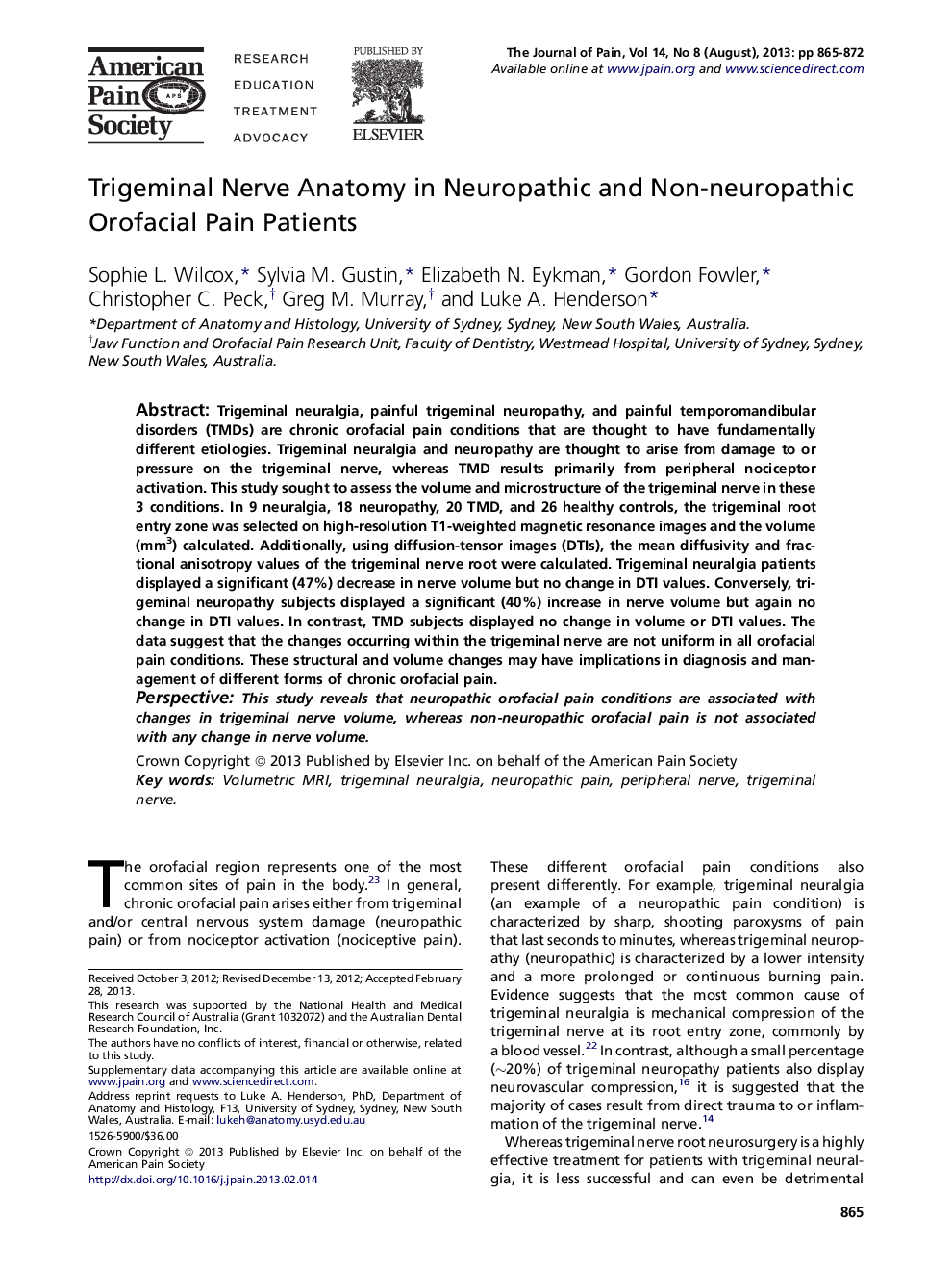| Article ID | Journal | Published Year | Pages | File Type |
|---|---|---|---|---|
| 5880861 | The Journal of Pain | 2013 | 8 Pages |
Trigeminal neuralgia, painful trigeminal neuropathy, and painful temporomandibular disorders (TMDs) are chronic orofacial pain conditions that are thought to have fundamentally different etiologies. Trigeminal neuralgia and neuropathy are thought to arise from damage to or pressure on the trigeminal nerve, whereas TMD results primarily from peripheral nociceptor activation. This study sought to assess the volume and microstructure of the trigeminal nerve in these 3 conditions. In 9 neuralgia, 18 neuropathy, 20 TMD, and 26 healthy controls, the trigeminal root entry zone was selected on high-resolution T1-weighted magnetic resonance images and the volume (mm3) calculated. Additionally, using diffusion-tensor images (DTIs), the mean diffusivity and fractional anisotropy values of the trigeminal nerve root were calculated. Trigeminal neuralgia patients displayed a significant (47%) decrease in nerve volume but no change in DTI values. Conversely, trigeminal neuropathy subjects displayed a significant (40%) increase in nerve volume but again no change in DTI values. In contrast, TMD subjects displayed no change in volume or DTI values. The data suggest that the changes occurring within the trigeminal nerve are not uniform in all orofacial pain conditions. These structural and volume changes may have implications in diagnosis and management of different forms of chronic orofacial pain.PerspectiveThis study reveals that neuropathic orofacial pain conditions are associated with changes in trigeminal nerve volume, whereas non-neuropathic orofacial pain is not associated with any change in nerve volume.
